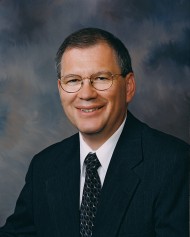 This issue of Hesston College Today celebrates the contributions of those who have come to Hesston College from a variety of cultural backgrounds. This diversity, which we celebrated during Homecoming in September, is part of our history and has become even more prominent in recent years. Our current student population includes students from 12 countries outside of the United States, representing 11 percent of our total students. In recent years, our student population has included 30 to 35 percent students of color. There is growing diversity in terms of our religious backgrounds as well, with 25 faith traditions represented on campus. Ten years ago, more than 50 percent of our students were Mennonite, and that group is now just under 35 percent. We also have students at various life stages and in different professional programs. It all adds up to a wonderful campus community.
This issue of Hesston College Today celebrates the contributions of those who have come to Hesston College from a variety of cultural backgrounds. This diversity, which we celebrated during Homecoming in September, is part of our history and has become even more prominent in recent years. Our current student population includes students from 12 countries outside of the United States, representing 11 percent of our total students. In recent years, our student population has included 30 to 35 percent students of color. There is growing diversity in terms of our religious backgrounds as well, with 25 faith traditions represented on campus. Ten years ago, more than 50 percent of our students were Mennonite, and that group is now just under 35 percent. We also have students at various life stages and in different professional programs. It all adds up to a wonderful campus community.
My favorite room on campus is the Dining Hall, surrounded by the flags of all countries represented by our students. It is common to see students from three or four continents and hear conversations in different languages. I do not have comparative data to back this claim, but Hesston may be the most diverse of all private colleges in Kansas.
In the last three years, we have been engaged in an inclusion and diversity initiative, with the overall goal of becoming a more welcoming community. A council led by Tony Brown ’69, internal consultant for inclusion, Marelby Mosquera ’04, faculty member, and Rachel Swartzendruber ’00 Miller, vice president of Admisisons, develops specific goals and plans to help us become more like the inclusive community envisioned in the New Testament.
This is important work. One cannot adequately learn from other cultures by reading, listening and watching. We learn from each other by being with each other and working and playing together. We hear each other’s stories and learn to let go of stereotypes and privileges that come with color of skin, family names and places of birth.
Part of our mission statement reads “educates and nurtures each student in Christ-centered community.” The growing richness of our student population and our efforts to learn from each other helps us come closer to realizing this ideal.

